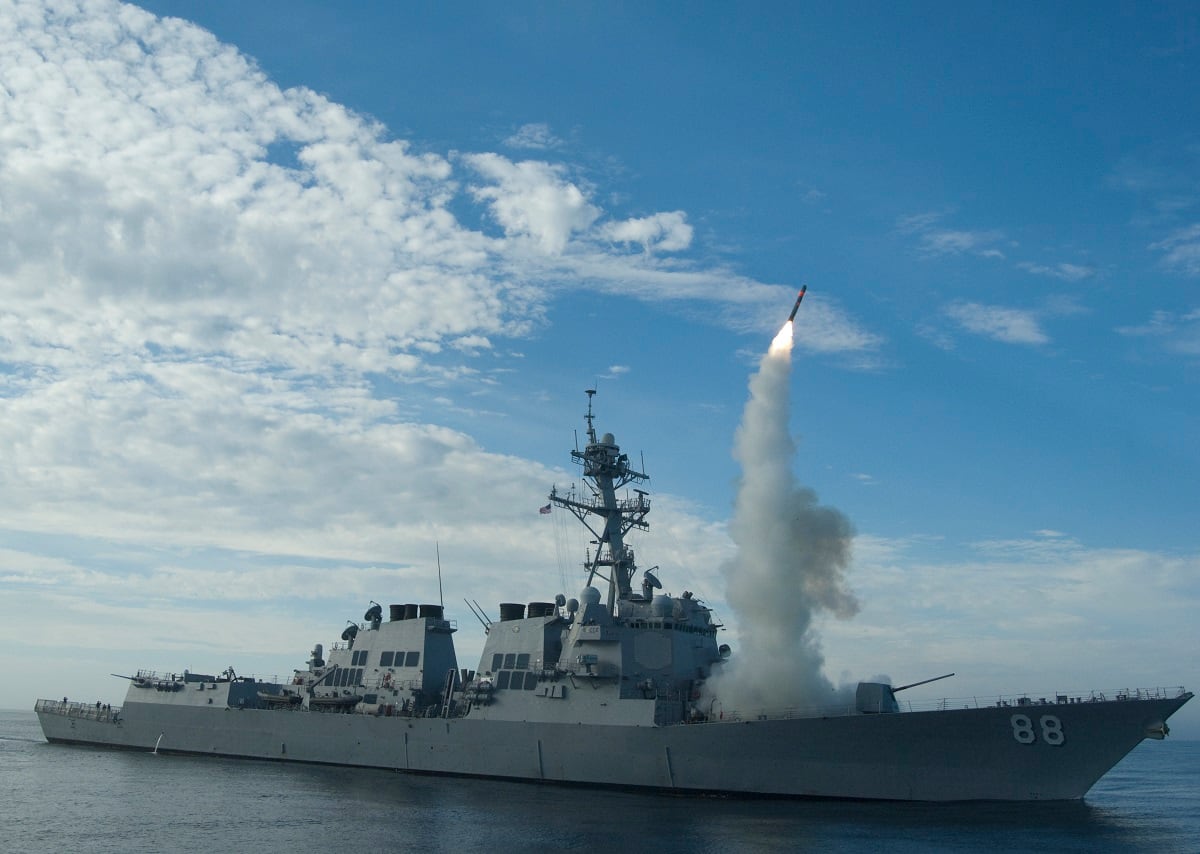The United States’ nuclear deterrent has been the cornerstone of our national defense and of international stability since World War II. Today, operating, sustaining, and recapitalizing our nuclear deterrent accounts for only about 4 percent of our overall defense budget, yet its value to America’s security is incalculable.
For more than 70 years, presidents from both political parties have shepherded this enormous responsibility to ensure the safety and security of the American people and our allies. While each administration has adapted our nuclear posture to evolving threats, the story of U.S. nuclear policy is more about steady consistency than dramatic change.
The recently-released Nuclear Posture Review (NPR) is in line with this tradition and reflects the central conclusion of the broader National Defense Strategy released in January: the U.S. must recognize the reality of a return to great power competition and posture itself accordingly. After a thorough review of current U.S. nuclear posture and plans, coupled with a comprehensive assessment of how the security environment has changed since the Obama Administration’s 2010 NPR, Secretary of Defense James Mattis has reaffirmed the central elements of our nuclear posture and suggested several tweaks to account for today’s threats.
RELATED

At its core, the NPR reconfirms the long-recognized value of the U.S. nuclear triad. It provides direction to the Department of Defense and the Department of Energy to continue the comprehensive nuclear recapitalization program initiated by President Obama, including the Columbia-class submarine, the Ground-Based Strategic Deterrent, the B-21 Raider bomber, the Long-Range Standoff cruise missile, and various warhead modernization programs. These programs enjoy broad support in Congress and must continue.
Importantly, Secretary Mattis’ review highlights three critical components of our deterrent that previously received scant attention: our nuclear command, control, and communications system; the infrastructure and facilities in both DoD and the DoE’s National Nuclear Security Administration enterprise; and—most importantly—the military and NNSA personnel who make up the backbone of our deterrent. All require sustained attention and resources to ensure they are ready to meet the future.
The new NPR also rightly recognizes that deterrence is dynamic. The shifting threat landscape requires us to adjust our nuclear posture to ensure that deterrence of adversaries and assurance of allies remain credible and effective. This realization is particularly important as great power tensions reemerge as the driving force in international security and as Russia and China continue to advance their nuclear capabilities with new, more modern weapons that have characteristics different from their Cold War arsenals.
For instance, Russia continues to develop and deploy a variety of nuclear weapons not covered under any arms control treaty. Secretary Mattis’ proposal to redeploy nuclear-armed sea-launched cruise missiles (SLCMs) is a sensible move to reassure our NATO allies and pressure Russia into finally engaging in arms control on these weapons. Recent moves to pressure Russia to stop its flagrant violation of the Intermediate-Range Nuclear Forces Treaty are also steps in the right direction. Eight years after the 2010 NPR optimistically stated “Russia is not an enemy, and is increasingly a partner,” we must recognize treaty violations and Russia’s aggression for what they are: part of Russia’s strategy to fracture NATO and dominate sovereign countries.
Similarly, Russia’s plans to “escalate-to-deescalate” in a war with NATO requires clear, direct, and near-term action to deter. In a carefully calibrated response, the NPR proposes to modify and deploy a small number of low-yield ballistic missile warheads on our submarines to discourage the use of nuclear weapons by anyone. This step will help ensure deterrence prevails and that conflict is prevented in the first place.
Secretary Mattis’ review also recognizes that strategic threats to the U.S. and our allies are evolving and multiplying—and are not just nuclear in nature. While the bar must remain high for any consideration of using nuclear weapons, our adversaries must not believe that they can carry out crippling, strategic attacks on our population or infrastructure with biological or other non-nuclear means without the U.S. considering the most devastating of options in response.
The latest NPR reaffirms President Reagan’s dream of a world without nuclear weapons and stresses continued engagement with nuclear powers for prudent arms control agreements. But, it also reflects the reality that U.S. commitments to disarmament cannot be unilateral. The U.S. has provided decades of opportunities for other nuclear powers to follow our lead in de-emphasizing nuclear weapons. They have not. For the sake of avoiding nuclear war and protecting the security of America and our allies, we must now take steps to ensure the continued credibility of U.S. nuclear deterrence and assurance until the international security environment shifts to more favorable conditions once again.
Three successive secretaries of Defense have called our nuclear deterrent the nation’s number one priority defense mission. That mission will comprise no more than 7 percent of the defense budget during the peak of the coming modernization program. As Secretary Mattis has said, “America can afford survival.” Congress now has the responsibility to take necessary steps to ensure our nuclear deterrent remains safe, secure, and credible. Our national security and world stability depend on it.
Rep. Mac Thornberry MacThornberry, serves as Chairman of the House Armed Services Committee.








